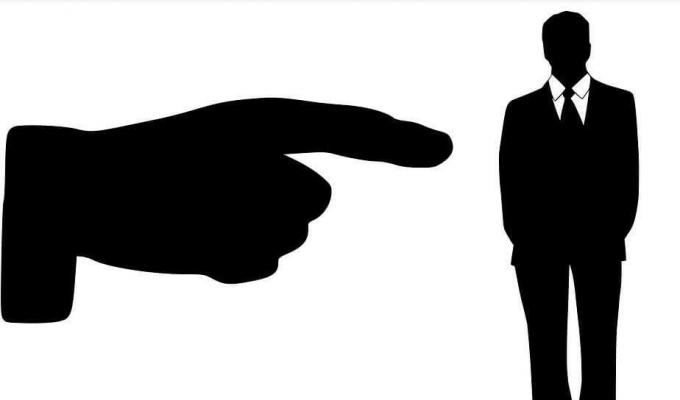The productivity of your employees it is one of the triggers for the success of a company or organization; said productivity is closely related to the motivation of each of the individuals that compose it.
For this reason, it is vital that those charged with running the organization provide an appropriate environment that increases the motivational cycle of your employees. This will also allow your talents to continue to develop, which will pay off in the long run.
Advertisements

To this end, those charged with leadership will focus their efforts on keeping their subordinates motivated and increase your productivity. For this, it is very useful to know each stage of the motivational cycle.
Advertisements
In this article you will find:
What does the motivational cycle refer to?
Truly successful organizations are those that recognize that the people who are part of it are a determining factor in achieving their goals. When each member feels good about their environment, their commitment increases and they are able to make valuable contributions beyond their tasks.
This way of acting is highly linked to what motivates each individual, this can be internal or external. That is, it can come from the perception of the environment in which it develops or from its mental processes.
Advertisements
To understand what the motivational cycle isIt is important to specify that the term motivation, in this case, refers to an impulse; This impulse can cause a person to act in a certain way or cause them to have a certain tendency to some type of behavior.
Taking all this into account, it can be said that the motivational process they are all the procedures or stages that begin with an impulse to achieve some objective.
Advertisements
This process extends throughout the time in which the individual acts to achieve the goal that has been proposed or meet a need.
However, this process may be stopped if a need cannot be met, which could lead to one or more unfavorable reactions. This reaction can be psychological, in the form of apathy, dissatisfaction, or aggressiveness, or physiological, such as insomnia, stress, or heart conditions.
On the other hand, it may happen that, even if the cycle is not completed, there is some type of compensation that prevents the appearance of frustration. In other words, another type of need is covered during the process.
Advertisements
A good example of this would be that instead of receiving an expected promotion, a person receives a raise. Although it is not the goal you wanted to achieve, you receive compensation that relieves the burden of the previous need.
It is also called the motivational cycle, because it is somewhat cyclical; that is, once the individual has reached one goal, he will go after another, starting the process again.
Stages of the motivational cycle
The motivational cycle is made up of six stages that work cyclically. These are:
Homeostasis
In psychology, homeostasis is the natural tendency that every organism has to restore your balance once it has been altered. For this, information is received, processed and subsequently the necessary adjustments are made to apply it and achieve the desired balance.
This process is extremely necessary for all living beings, especially for the human psyche, since it contributes to its optimal functioning. And it is to move away from there where the motivational cycle begins.
· Stimulus
Once it is in equilibrium, an incentive or stimulus appears that generates a need.
· Need
When a need appears, the equilibrium state is broken, therefore, the individual feels incentivized to achieve some objective. This causes a state of tension.
State of tension
The individual enters a state of tension, since he does not feel well with the appearance of a new need. Try to find satisfaction in meeting the goal you have set.
· Behaviour
After the state of tension, the individual takes action that allows him to satisfy his need. When his actions or behaviors do not allow him to achieve his objectives, the process will be interrupted, entering a state of frustration or dissatisfaction.
On the other hand, if you can meet your goals and meet your needs, you will move on to the next phase of the cycle.
Satisfaction
Once the individual sees his existing needs met, he will feel satisfied, which will have a positive influence on his mood. From there, he will be able to return to a state of equilibrium by processing the knowledge that he has acquired during the process.
What should the leaders of a company keep in mind when motivating?
An organization that keeps its members motivated will have the ability to achieve his goals even in the face of a crisis. Because each individual that makes it up will feel committed to achieving success regardless of the environment.
For this it is necessary that each of those who exercise leadership take into account that motivation can vary from person to person. This depends on the upbringing, the values, the perception, among other factors, of each individual.
Bearing this in mind, and knowing that current times cause constant changes within companies, it is necessary to promote a motivational climate for everyone. This must be a continuous process that guarantees the satisfaction of all the people who make up the organization, so that their performance is optimal.
To this end, attention must be paid to the expectations that each individual who is part of the organization has; subsequently, the level of accessibility that the company has to cover said expectation must be evaluated.
From there, a motivational policy plan can be drawn up that is constantly in operation. So that different goals can be achieved over time and all staff feel satisfied with their performance within the company.
Referential source:
- Idalberto Chiavenato
- Human resources administration - The human capital of organizations (Page 49)
- https://www.upg.mx/wp-content/uploads/2015/10/LIBRO-12-Administracion-de-recursos-humanos.-El-capital-humano.pdf


